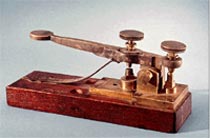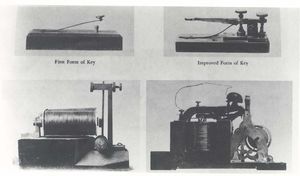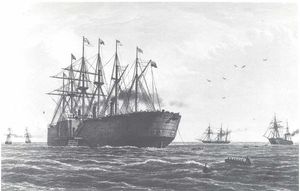Telegraph
Telegraph

One of the most important ways that electricity and magnetism have been put to use is making communication faster and easier. In this day of instant messaging, cell phones, and pagers, it’s hard to imagine a time when messages had to be written and might spend weeks or even months reaching their destination. They had to be carried great distances by ships, wagon, or even by horseback—you couldn’t just call somebody up to say hello. That all changed when inventors began using electricity and magnetism to find better ways for people to talk to each other.
The telegraph was first conceived of in the 1700s, but few people pursued it. By the 1830s, however, advancements in the field of electromagnetism, such as those made by Alessandro Volta and Joseph Henry, created new interest in electromagnetic communication. In 1837, English scientist Charles Wheatstone opened the first commerical telegraph line between London and Camden Town, a distance of 1.5 miles. Building on Wheatstone's ideas, Samuel Morse, an American artist and inventor, designed a line to connect Washington, DC and Baltimore, Maryland in 1844.
Morse’s telegraph was a simple device that used a battery, a switch, and a small electromagnet, but it allowed people miles apart to communicate instantly. Although Morse is often credited with inventing the telegraph, his greatest contribution was actually Morse Code, a special language designed for the telegraph.
Morse's commercialization of the telegraph spread the technology quickly. In 1861 California was connected to the rest of the United States with the first transcontinental telegraph line. Five years later, engineers found a way of spanning the Atlantic Ocean with telegraph lines, thus connecting the United States and Europe. This was an enormous and challenging job.
To do it engineers had to use a huge ship called The Great Eastern to lay the cable across the ocean. It was the only ship with enough room to store all that cable. The world was connected by wire before the nation was connected by rail—the transcontinental railroad wasn’t completed until 1869! The telegraph was the key to fast, efficient railroad service. The railroads and the telegraph expanded side-by-side, crisscrossing every continent, except Antartica, in the late 1800s. In the late 19th and early 20th centuries, telegraphy became a very lucrative business for companies such as Western Union. It also provided women with new career options.


